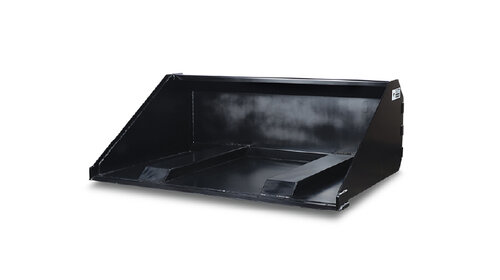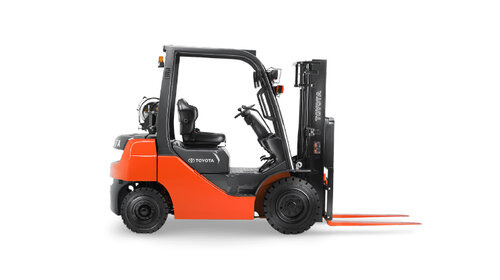Operating a forklift is no small task. Whether you're on a busy construction site or handling materials at a warehouse, forklift safety is crucial to protecting your team from accidents. In this article, we’ll break down some critical forklift safety tips that every operator should know to reduce risks and protect their crew.
Understanding Forklift Safety
Forklifts are indispensable tools on many jobsites, but they can also be dangerous if not handled properly. Forklift accidents often stem from three primary causes: operator error, mechanical failure and poor workplace conditions. Each of these hazards poses a significant risk, not only to the operator but to everyone working nearby.
When a forklift malfunctions, or when the operator isn’t adequately trained, the results can be catastrophic. From tip-overs to collisions, accidents can cause serious injuries, costly downtime and in the worst cases, fatalities. For businesses, this means not only dealing with the human toll of an accident but also potential OSHA penalties and higher insurance premiums. It’s critical to stay ahead of these risks with proper safety practices.
Essential Forklift Safety Tips
To operate a forklift safely, it’s crucial that you understand and implement the following safety guidelines:
Comprehensive Training and Certification
The first step in forklift safety is ensuring that every operator has undergone thorough training and certification. This isn't just about knowing how to drive the forklift—it's about understanding the specific challenges that come with operating these machines on rough terrain or in tight spaces, especially on construction sites.
Operators must be trained on the exact type of forklift they’ll be using. Whether it's an industrial forklift or a rough terrain forklift, each machine has different controls and operational quirks. Never assume someone who can operate one forklift class can operate another without training.
Safe Driving Practices
Forklifts are not built for speed, and for a good reason. Driving too fast puts operators and crew members at an increased risk for accidents. On any jobsite, it’s important to maintain a safe speed, particularly when making turns or navigating tight areas. Forklifts are more prone to tipping than most vehicles, so operators should take things slow and steady.
Another key point: seat belts are non-negotiable. Even on rough terrain, seat belts are essential to keep the operator safe in case of a tip-over or sudden stop. Additionally, operators should always keep a clear line of sight. If the load obstructs the view, it's better to drive in reverse or have a spotter assist.
Proper Loading and Unloading
Improper loading is a recipe for disaster. Always balance the load on the forks and never exceed the forklift’s weight capacity. Overloading puts undue stress on the forklift, increasing the chance of tipping or mechanical failure. Before moving, ensure the load is stable and secure. If it feels even slightly off balance, take the time to adjust it—rushing only increases the risk of an accident.
When unloading, be mindful of workers around you. Communicate clearly with signals or horns to ensure that no one is in harm's way.
Creating a Safe Work Environment for Forklifts
Proper planning is the foundation of a safe jobsite, and forklift operations should be a key part of that strategy. Designing workspaces to minimize risks is crucial for both operators and ground workers.
Designated Forklift Lanes and Clear Signage
Set up clear, designated lanes for forklifts to travel through. This helps separate pedestrian traffic from forklifts, reducing the chance of collisions. Workers on foot should always be aware of where forklifts are operating and operators should stick to these designated paths. Alternatively, you could implement designated pedestrian walkways, keeping forklifts away from these areas.
Signage is equally important. Every worker should know what areas are high-risk zones. Mark blind corners, intersections and loading areas with highly visible signs and paint lines. Even seasoned operators can lose focus or become complacent, so having visual reminders around the jobsite is critical.
Effective Communication
Operators and crew members need to communicate consistently. The use of hand signals, radios or horns ensures that workers know when forklifts are approaching or moving heavy loads. In noisy environments like construction sites, this communication can prevent accidents.
Whenever possible, assign spotters to guide forklift operators in complex or crowded areas. A second set of eyes can be the difference between a smooth operation and a costly mishap.
Emergency Preparedness and Response to Forklift Accidents
Even with the best safety measures, accidents can still happen. That’s why it’s vital to have an emergency response plan in place. Every worker should know what to do if a forklift accident occurs, including first aid procedures and reporting protocols.
Regular safety audits can help identify weak points in your current procedures. By updating your safety protocols frequently, you stay one step ahead of potential hazards and ensure that everyone on the site remains protected.
First Aid and Accident Reporting
In the event of an accident, having a trained first responder on site can make a huge difference in outcomes. Whether it’s treating an injury or stabilizing a worker until medical professionals arrive, a prompt response is key.
Equally important is reporting the accident correctly. Ensure that all incidents are reported to the appropriate safety officers and that OSHA reporting guidelines are followed. Accurate reporting helps prevent future accidents by highlighting problem areas that need attention.
Safety Audits and Continuous Improvement
Safety is an ongoing process. Regularly review your jobsite’s safety measures to identify any areas that could be improved. Are your operators up to date on training? Are forklifts receiving routine maintenance? Answering these questions is essential for keeping everyone safe.
Final Thoughts on Forklift Safety
Forklift safety is about more than just protecting operators—it's about safeguarding your entire crew and keeping your jobsite running smoothly. Comprehensive training, cautious driving, smart workspace design and a clear emergency plan are non-negotiable components of a safe work environment.
Forklift Rentals from EquipmentShare
If you’re in need of a reliable, high-quality forklift, EquipmentShare offers a range of rental options. Explore our selection of industrial forklifts and rough terrain forklifts to get the best machine for your needs.

.svg)
.svg)














